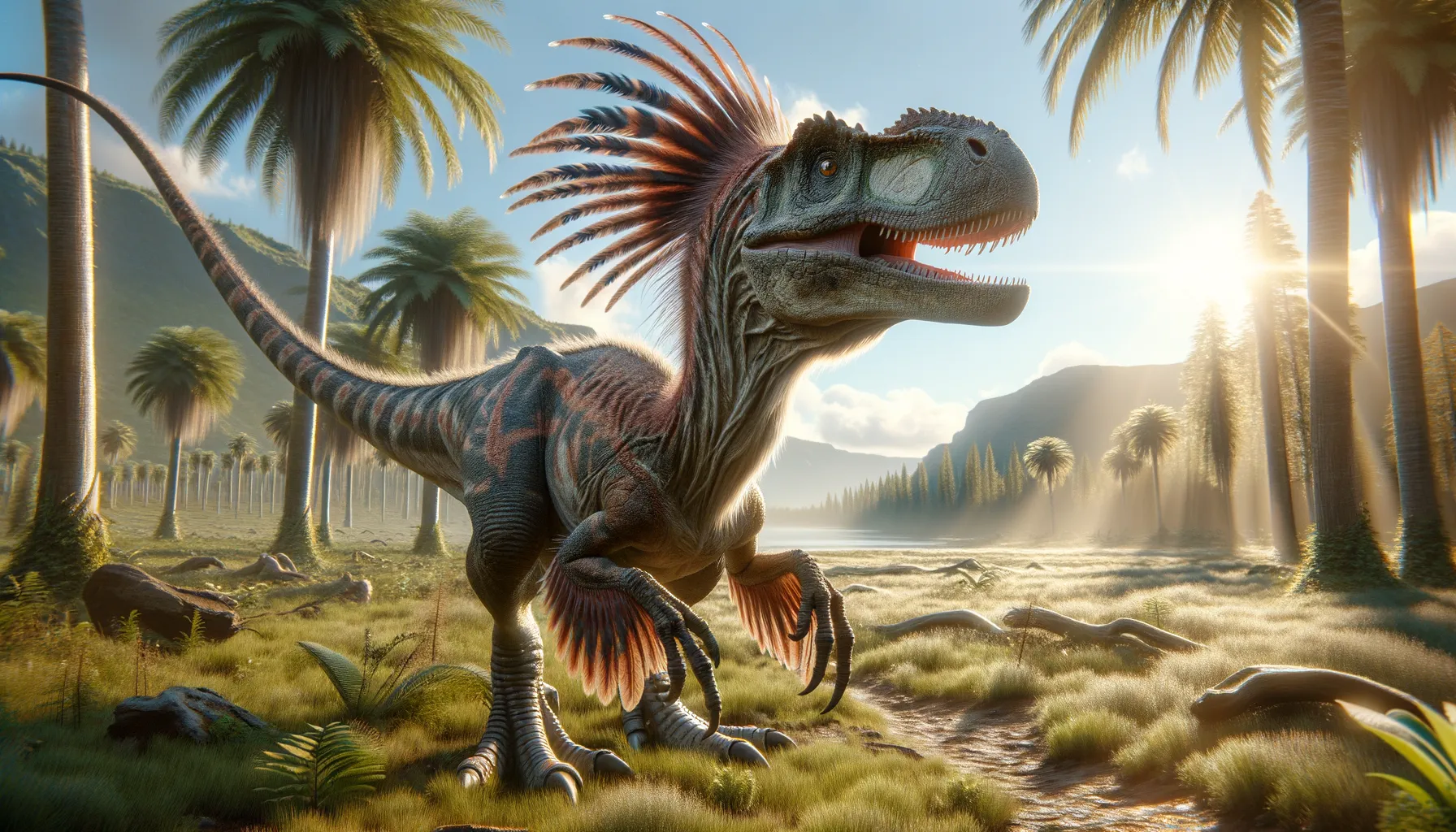
Alxasaurus
Unlocking ancient secrets with giant claws.
Period
Cretaceous
Length
Measured about 4 to 5 meters long.
Height
Stood approximately 1.5 to 2 meters tall.
Weight
Weighed around 300 kilograms.
Alxasaurus was a fascinating dinosaur from the Early Cretaceous period, distinctly recognized by its large claws and feather-like structures. It was a therizinosauroid, which suggests a unique evolutionary path in its group. Its fossils reveal it had a bird-like body, hinting at how diverse dinosaur species could be. This somewhat enigmatic creature helps paleontologists connect the dots between dinosaurs and modern birds, showcasing the intriguing evolutionary journey over millions of years.
Diet
Alxasaurus is believed to have been an herbivore, primarily feeding on leaves and other plant materials. Its beak-like mouth and long neck would have helped it reach vegetation in its environment.
Hunting
As an herbivore, Alxasaurus did not hunt like carnivorous dinosaurs. Instead, it likely foraged in its surroundings, using its strong claws to pull down branches and gather food.
Environmental challenges
Alxasaurus faced various environmental challenges, such as changing climates and the availability of food sources. The Cretaceous period was a time of significant shifts, which could have impacted its habitat and feeding habits. Additionally, predation by larger carnivorous dinosaurs may have posed a constant threat, requiring resourceful strategies for survival.
Speed
Relatively slow-paced, likely walking.
Lifespan
Estimated to live up to 20 years.
First discovery
First discovered in Inner Mongolia during the early 1990s.
Fun Facts
- Alxasaurus was a dinosaur that lived approximately 100 million years ago during the Early Cretaceous period.
- It was named after the Alxa region in Inner Mongolia, where its fossils were first discovered.
- Alxasaurus is believed to have been a therizinosaur, a group of unusual herbivorous theropods with large claws.
- Unlike many other dinosaurs, Alxasaurus had a long neck and a small head, which helped it reach vegetation.
- It is thought to have walked on two legs, but scientists believe it may have been capable of using all fours when feeding.
- The discovery of Alxasaurus has helped scientists understand the evolution of therizinosaurs from carnivorous ancestors.
- Its large, clawed hands were likely used to pull down branches or defend itself against predators.
Growth and Development
Alxasaurus likely experienced growth spurts as it transitioned from a juvenile to an adult. The presence of feathers or feather-like structures may suggest thermal regulation adaptations. Its limbs evolved to become more useful for foraging, as well as potentially for defense against predators.
Habitat
Alxasaurus lived in what is now Inner Mongolia, suggesting a habitat of open plains or forested areas. This region during the Cretaceous might have offered a variety of vegetation, supporting its herbivorous diet. Seasonal changes in the environment could have influenced migratory or stationary behaviors.
Interaction with other species
As an herbivore, Alxasaurus coexisted with various other dinosaur species. Its presence in shared ecosystems suggests it played a part in the balance of plant-eating and plant-growth dynamics. Predatory dinosaurs would have seen Alxasaurus as potential prey, influencing its behavior and evolution strategies.
Natural lifespan
In natural conditions, Alxasaurus may have lived around 20 years.
Reproduction
Alxasaurus likely reproduced through egg-laying, similar to other dinosaurs. It may have engaged in nesting behaviors, possibly protecting or incubating its eggs. The need for successful reproduction would have been vital to its survival, needing strategies to ensure offspring reaching maturity.
Social behaviour
The social behavior of Alxasaurus is not well-documented, but it may have lived in groups to deter predators. Such social structures might have facilitated better protection of young and resource-finding strategies. Group living would also have influenced its mating rituals and reproductive success.
Fossil locations
Alxasaurus fossils have been primarily uncovered in Inner Mongolia, China. These findings have been crucial in understanding the evolution and diversity of therizinosaurs. The region's sedimentary layers from the Cretaceous period have provided detailed insights into its existence and environment.
